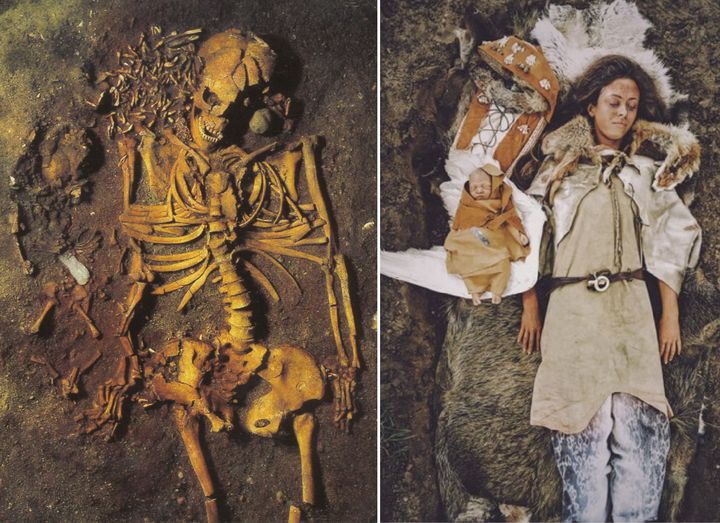The discovery of an ancient burial site in Vedbæk, Denmark, has shed light on the emotional and cultural lives of Mesolithic hunter-gatherers. Dating back 7,000–6,000 years, this burial reveals a deeply moving story of a young mother and her infant, offering a glimpse into prehistoric practices, beliefs, and human connections.
The Discovery of the Vedbæk Burial
Vedbæk, a Mesolithic site near Denmark’s coast, is home to an extensive cemetery where archaeologists uncovered numerous graves. Among these, the burial of a young woman and her infant stands out as a particularly poignant find. The remains were first excavated in the 1970s, but their emotional and cultural significance continues to resonate today.
The mother, believed to be in her early twenties, was interred alongside her baby, suggesting a simultaneous death. The infant, likely a newborn, was laid on a swan’s wing—a feature that hints at symbolic or spiritual practices associated with death and mourning.

Symbolism in the Burial Arrangement
The burial’s unique arrangement reveals the care and reverence Mesolithic people afforded their dead. The swan’s wing beneath the infant might symbolize purity, protection, or even a connection to the afterlife. In many cultures, birds have been associated with the soul and its journey beyond life, making the inclusion of this element a potentially spiritual gesture.
Red ochre, a mineral often used in prehistoric burials, was also found in the grave. Its presence suggests ritualistic practices, as ochre was commonly employed to symbolize blood, life, or rebirth. These choices reflect the emotional depth and cultural complexity of Mesolithic societies.
Insights into Mesolithic Life and Death
The Vedbæk burial provides valuable insights into the lives of Northern European communities during the Mesolithic period.
Diet and Health
Examinations of skeletal remains in the cemetery indicate a diet rich in seafood, including fish and shellfish, reflecting the community’s reliance on coastal resources. However, some bones show evidence of stress and injury, revealing the physical challenges of a hunter-gatherer lifestyle.
Social and Spiritual Beliefs
The care shown in burial practices suggests that these people had complex social and spiritual systems. The inclusion of tools, ochre, and symbolic items in graves indicates that death was seen as a transition rather than an end, with rituals helping to guide the deceased to an afterlife.
The Tragedy of Motherhood and Loss
At its core, the Vedbæk burial tells a deeply human story. The simultaneous deaths of the young mother and her baby evoke a sense of tragedy that transcends millennia. Whether due to complications during childbirth, disease, or an unknown accident, their passing reflects the fragility of life in prehistoric times.
The deliberate care taken in their burial demonstrates the enduring bonds of love and the community’s respect for these lives lost too soon.

The Legacy of Vedbæk
The Vedbæk cemetery is more than a collection of ancient graves—it is a window into the human experience thousands of years ago. The burial of the young mother and her infant continues to remind us of the shared emotions and cultural expressions that connect us to our ancestors.
As archaeologists continue to study sites like Vedbæk, they uncover not only the material remnants of the past but also the stories of love, loss, and resilience that define humanity.
Conclusion
The Vedbæk burial stands as a testament to the universality of human experiences. Through careful burial arrangements, symbolic objects, and traces of ritual, Mesolithic people demonstrated their capacity for emotional depth and cultural complexity. This ancient grave reminds us that even in the distant past, the bonds of family and the mourning of loss were central to the human story.
